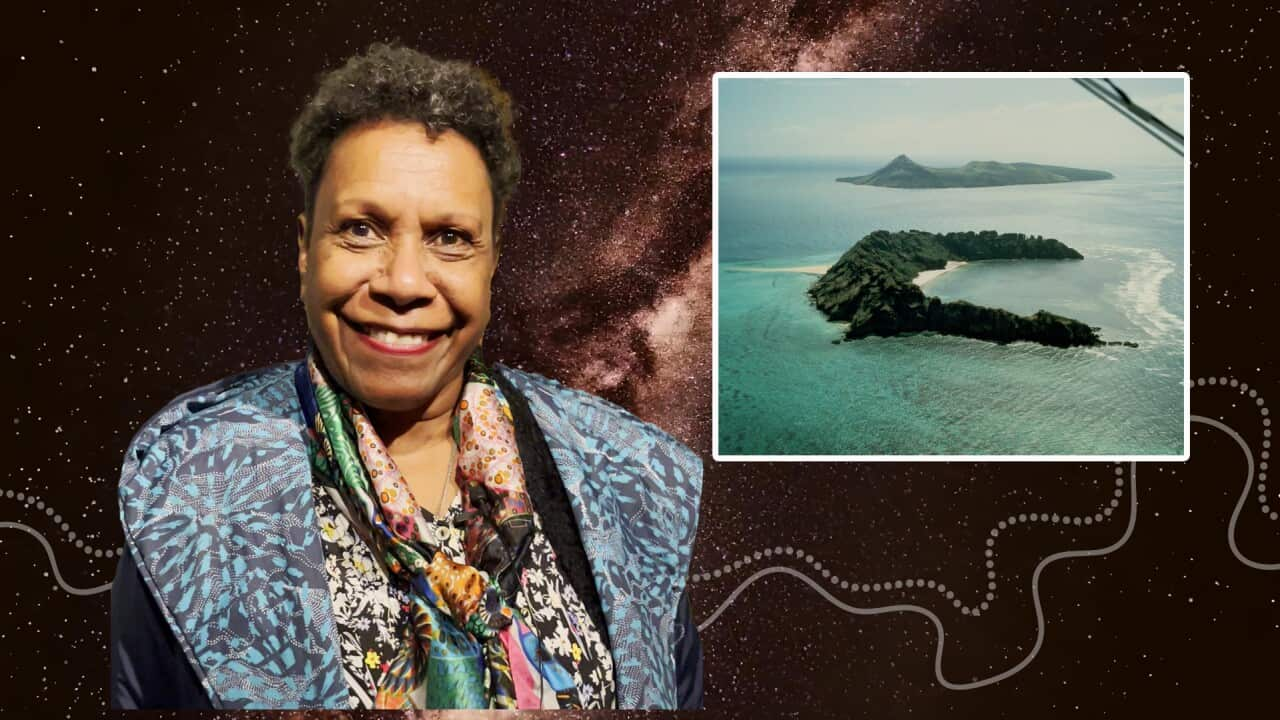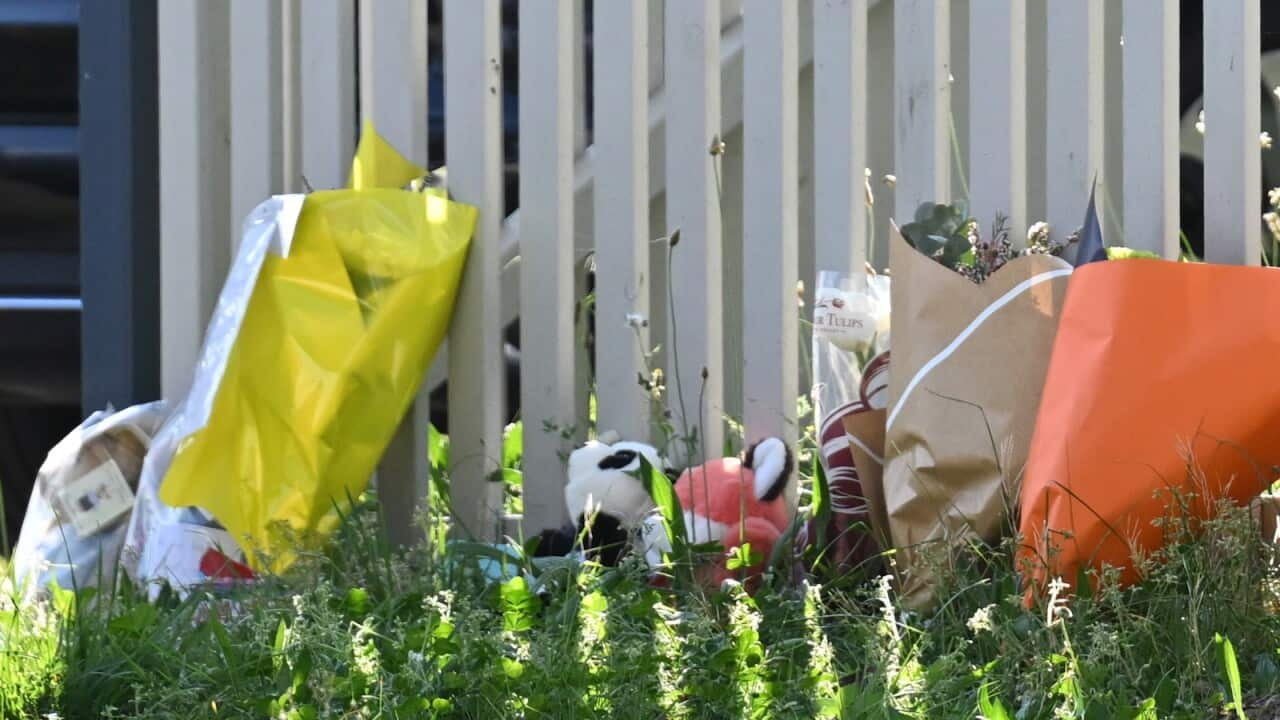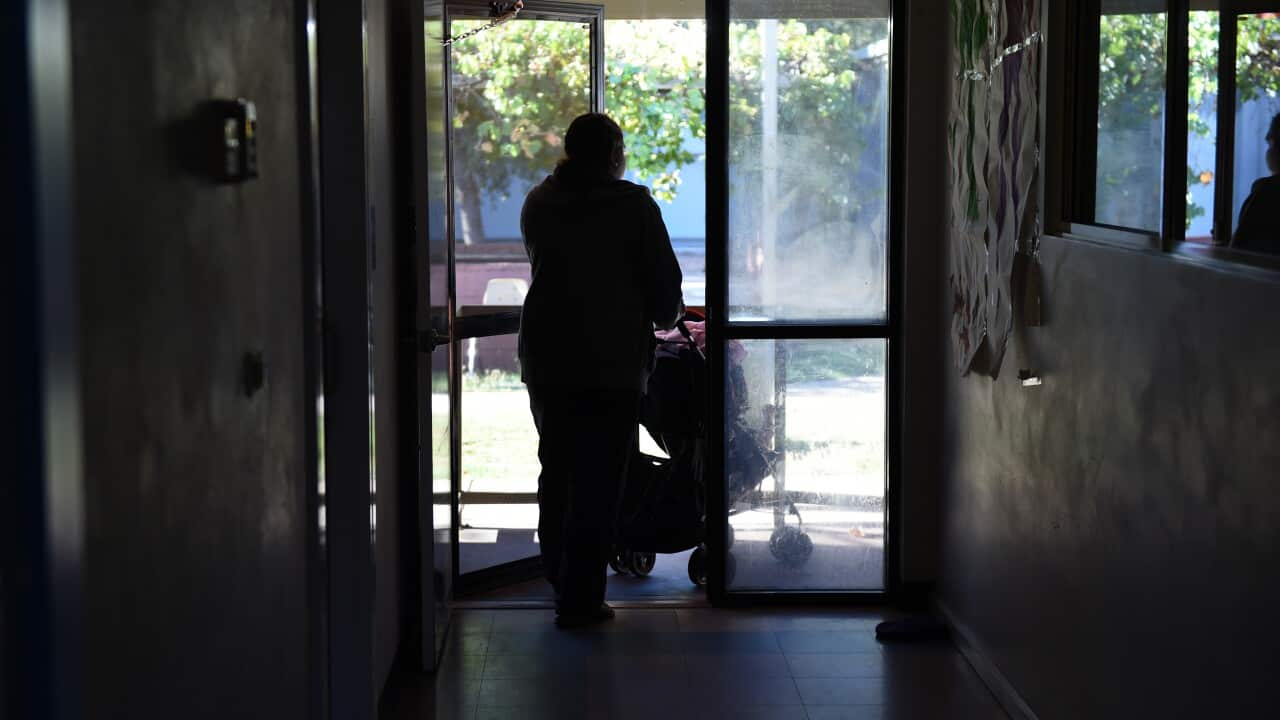When Aunty Gail Mabo was a child, she took a school trip to her ancestral home on Mer (Murray Island) in the Torres Strait.
It was a transformative excursion that taught her the power of both the very small and the very large, from sand to stars.
The teacher in charge also happened to be her father, Eddie Koiki Mabo, not yet the historic victor of the country’s most significant land rights case.
One night, Koiki Mabo took the class to Werbadu, a secluded beach on Mer that is also home to a vanishingly rare ecological phenomenon.
“He sat us in the sand, and put the sand in our hands,” recalls Gail.
“And he said ‘Wipe the sand and find the stars.’ … I thought that was a bit strange.
“But sure enough, when we looked, there they were. I was amazed.”
Sitting in her palm were minuscule, star-shaped grains, the result of a process that only occurs in three places on Earth.
The Murray Island cluster includes Mer, Waier and Dowar. A trench that runs between the islands houses microscopic marine organisms.
Murray Islands: Waier in foreground, Mer, home of the late Eddie Koiki Mabo, behind. Credit: Auscape/Universal Images Group via Getty
When they die, the organisms de-gas and float to the surface, eventually washing ashore to that single beach, Werbadu.
“For me that’s a powerful thing,” the Meriam woman told NITV.
“I kept those grains of sand in a bottle, and now I share it with people.”
It’s an experience that has stayed with the visual artist for nearly 50 years, and can now be seen in a new exhibition at the Sydney Observatory.
‘I put the stars on the ground’, presented by the Powerhouse for the Sydney Science Festival, sees 3D-printed models of the microscopic sand grains mounted to bamboo frames in recreations of constellations.
The bamboo structures, replicas of constellations, hang in the Sydney Observatory.
The science of astronomy is incredibly important to First Nations cultures; rich cultural traditions surrounding observations of the heavens include storytelling, navigation and annual food cycles.
“For us, when we look at the stars, we look for a particular [constellation], and he’s called Tagai,” says Gail.
“We navigate by [Tagai]. We do our planting rituals through him, and it dictates our seasonal planting. As the seasons change, he is above is in different ways, but when Tagai’s hands are outreached and touch the horizon, that means it’s time to go hunting.
“That means the turtles are plentiful, they’ve laid their eggs and its now time to harvest.”
Tagai encompasses a vast astronomical field; the Southern Cross is merely a spear in the mighty figure’s left hand.
His right holds a cluster of beach cherry fruit, formed from the star group Corvus, while the Scorpius constellation represents Tagai’s canoe that stretches across the sky.
The shear breadth of the formation provided an incredible detailed navigation tool for traditional mariners.
“As seafaring people, sometimes we travel at night,” says Gail.
“If you follow a particular star, it’s over a particular island. And so in the Torres Strait, they all have different areas, but they know what part of Tagai sits over their island at that particular time, and can navigate to that point.”
Astronomy’s role in creating, and destroying, terra nullius
James Cook’s fateful voyage in the late 18th century initially had an astronomical purpose.
One of the important scientific pursuits of the day was to discover the distance between the Sun and the Earth.
To find the answer, Cook was sent on a mission to the Southern Hemisphere, to observe and measure the transit of Venus, a crossing of the Solar System’s second planet in front of the Sun (as viewed from Earth).
setting in motion the catastrophe of colonisation.
The lie of terra nullius provided legal cover for the theft of Aboriginal and Torres Strait lands that was to follow.
It was Eddie Koiki Mabo’s historic land rights fight that would undo that legal fallacy more than 200 years later, and the rich astronomical traditions of the Torres Strait helped his case.
The fact that Tagai’s position in the sky had been used for thousands of years to dictate farming, fishing and other traditional activities helped prove First Peoples’ ongoing connection with, and therefore legal right to, the land.
The Koiki Star
For Gail, much as the land rights legend Eddie Koiki Mabo had a another side as her father, the awesome power of astronomy likewise has a simpler significance.
It’s all special, because it’s about looking at the stars and remembering … who you were sitting with when you were listening to those stories.
“That’s that little bit of gold in a special box that you pull out at different times to remember and honour.
“That moment [on the beach] with my dad, I make that a story for children, to connect and to remember to be investigative.
“Their eyes sparkle when they see the grains of sand.”
Gail Mabo likes to share the story her father told her by bringing sand from the beach on Mer.
There’s another special story that Gail carries close to her heart, one she can think of every time she gazes at the spear in Tagai’s left hand.
In 2015, she was invited to the Sydney Observatory to receive a special honour: .
“This star sits in the Southern Cross,” she says.
“The colour of it is a brilliant blue, and when they saw it, they went ‘This looks like water. How can we honour this star?’
“They contacted me and said, ‘We’d like to name this star after you dad.’
“I said ‘If you’re going to do that, do it as his language name.’ Because that’s the strength of a person. So we called it the Koiki Star.”
Gail’s mother, Koiki Mabo’s beloved wife Bonita, also visited the Observatory to look at her husband’s star through a telescope.
She jokingly remarked that she would like a star of her own, little knowing the impact it would have.
“When my mum was in palliative care, I came here to accept her star, which is called Bonita,” says Gail.
“So Bonita and Koiki sit together in the sky.”

















